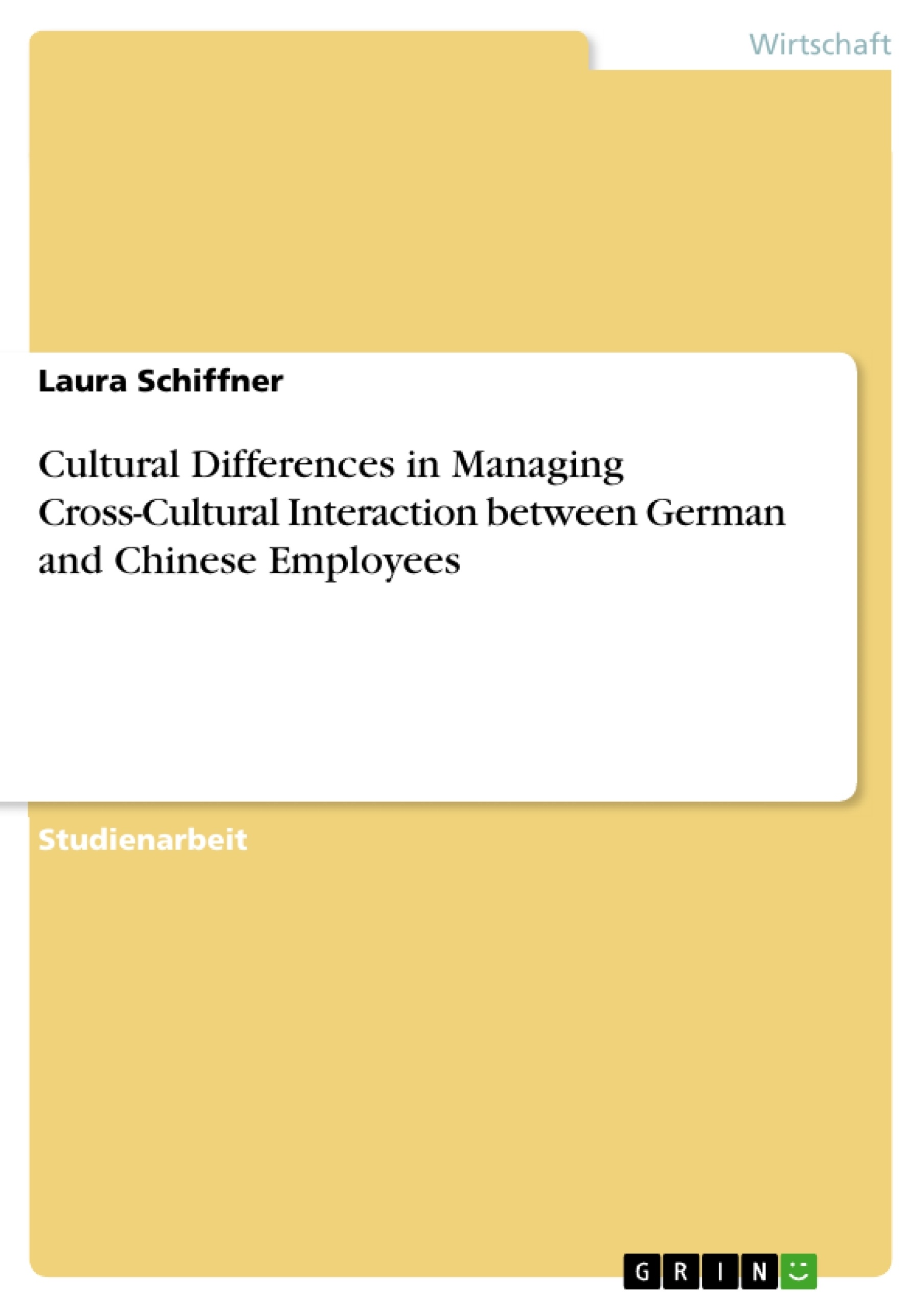The Chinese market is one of the most successful developing regions of the world. Today, it offers enormous possibilities for (German) companies to invest in this market i. a. though the delegation employees to China as well as the integration of Chinese employees in Germany. Due to the skill shortages it will become more necessary than ever to recruit high potentials, to transfer and to share knowledge about a certain business unit.Integrity and commitment are the most essential factors for a successful cooperation and teamwork within the company as well as for company`s success. Therefore it will be necessary to have a cooperative atmosphere with a mutual cultural understanding. Every employee “must use cross-cultural skills” (Adler 2002: 136). As Adler mentioned, organizations consist of work groups which form the organization structure. The quality of these teams depends on cultural heterogeneities and its productivity and performance “depends on how well the team works together and uses its resources to accomplish the task” (Adler 2002: 139). This goal can only be reached by understanding foreign cultures and using diversity. Diversity implies differences in “preferences, habits, languages and cultures” (Guirdham 2005: 305). Multinational working groups und cultural diversity can be the key for a much higher effectiveness and success than homogenous teams.
To develop an understanding for this purpose, Hofstede`s dimensions will be considered and analyzed, esp. against the background of Doing Business. Although, Hofstede`s concept of culture will be the basis for this work but moreover, the works of Adler, Guirdham, Beamer/Varner and Hall/Hall will play an additional role in this paper. This work will focus on multinational companies only, since the importance of intercultural business and cultural diversity is very high in contrast to domestic, multidomestic or multinational companies (cf. Adler 2002: 134). The following work shows the different cultural concepts in China and Germany and its relevance for a successful business, good collaboration and teamwork. Hofstede`s dimensions will be explained and applied in different contexts, by way of using different examples of employee participation, work-related behavioral patterns and conflict solving in organizations of different cultures. The examples refer to settings in organizations in Germany and China.
Inhaltsverzeichnis
- Introduction.
- Hofstede's Dimensions
- Power Distance.
- Uncertainty Avoidance.
- Individualism vs. Collectivism.
- Cross-cultural managing
- Conclusion....
- References.
Zielsetzung und Themenschwerpunkte
Diese Arbeit untersucht die kulturellen Unterschiede im Umgang mit interkultureller Interaktion zwischen deutschen und chinesischen Angestellten im Kontext globalisierter Unternehmen. Die Arbeit konzentriert sich auf die Analyse von Hofstedes Dimensionen der Kultur und deren Relevanz für erfolgreiches Geschäftsverhalten, Zusammenarbeit und Teamarbeit in Unternehmen.
- Analyse von Hofstedes Dimensionsmodell der Kultur
- Kulturelle Unterschiede zwischen Deutschland und China
- Die Bedeutung kulturellen Verständnisses für erfolgreiche Geschäftsinteraktion
- Zusammenhang zwischen Kultur und Teamarbeit
- Beispiele für kulturelle Einflussfaktoren in Arbeitsumgebungen
Zusammenfassung der Kapitel
- Kapitel 1: Introduction: Diese Einleitung führt den Leser in die Thematik der interkulturellen Kommunikation in globalisierten Unternehmen ein und beleuchtet die besondere Bedeutung des chinesischen Marktes für deutsche Unternehmen. Die Notwendigkeit von interkulturellen Fähigkeiten für erfolgreiche Teamarbeit und Unternehmenserfolg wird hervorgehoben. Des Weiteren werden die Ziele und der Umfang der Arbeit dargestellt.
- Kapitel 2: Hofstede's Dimensions: In diesem Kapitel werden die Dimensionen der Kultur nach Geert Hofstede erläutert. Der Ansatz von Hofstede, Kultur als "kollektive Programmierung des Geistes" zu betrachten, wird vorgestellt, und die fünf Dimensionen (Machtdistanz, Unsicherheitsvermeidung, Individualismus vs. Kollektivismus, Maskulinität vs. Femininität und Langzeit vs. Kurzzeit-Orientierung) werden definiert.
Schlüsselwörter
Die Arbeit konzentriert sich auf die Themen Interkulturelle Kommunikation, Kulturvergleich, Hofstedes Dimensionen, Geschäftsinteraktion, Teamarbeit, Deutschland, China, multinationales Unternehmen, kulturelles Verständnis, und Organisationskulturen.
- Arbeit zitieren
- Laura Schiffner (Autor:in), 2012, Cultural Differences in Managing Cross-Cultural Interaction between German and Chinese Employees, München, GRIN Verlag, https://www.grin.com/document/208231



